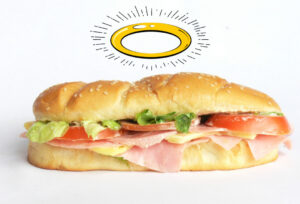What is the Halo Effect? [With 12+ Examples]
What do Taylor Swift, Tesla, and laundry detergent all have in common?
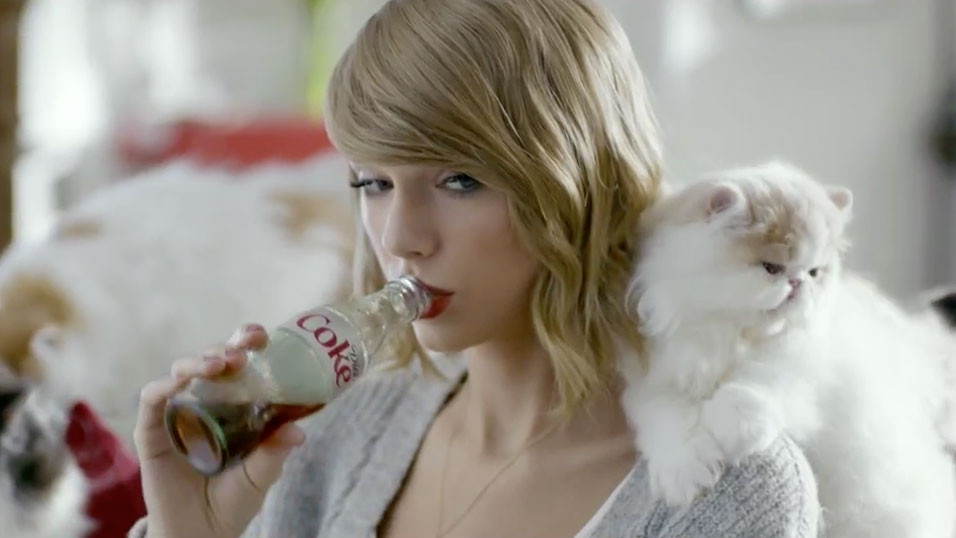
Source: Adweek
Yep, you guessed it: they are all examples of the ‘halo effect’ in action.
The halo effect shows up everywhere – in politics, business, our diets, and even criminal sentencing.
It’s why we perceive attractive people to be more intelligent, successful, and trustworthy.
In this post, we’ll explain why the halo effect matters in the world of marketing, and provide tips on how to create the best halo possible for your digital ad plan.
Let’s dive in.
What is the ‘Halo Effect’?
The halo effect is the tendency for an impression created in one area to influence our opinion in another area.
If you perceive a person to be friendly, you are likely to also see them as being generous, for example.
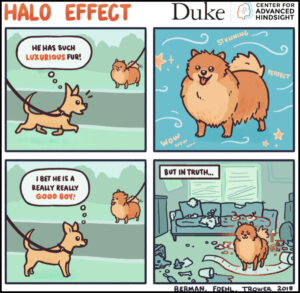
It’s our brain’s way of taking a shortcut to help us make decisions.
Our brain loves these little shortcuts, otherwise known as cognitive biases. It’s why there are over 180 known cognitive biases (and growing, as we continue to learn about the human mind).
Being a cognitive bias, the halo effect has its pros and cons.
While it allows us to process more information, it can also lead to flawed assumptions.
But because the halo effect is such an integral part of how the human mind works, it’s worth taking a closer look.
The Original Halo Effect Experiment
Psychologist Edward Thorndike first coined the term ‘halo effect’ in 1920 when he noticed some unexpected behavior in a study.
Military officers were asked to rate their soldiers on characteristics such as leadership, intelligence, physical appearance, and loyalty.
According to the officers – if a subordinate excelled at one thing, that must mean they were good at everything.

The opposite held as well – if they were bad at one thing, they must be terrible at everything else.
Interesting side note: once an officer made their assessment, they were unlikely to later change their mind.
Once we form our opinions on a person (or a brand), it takes a lot of work to shift that opinion.
This halo effect is one reason why they say first impressions are so important.
The Horn Effect
The opposite of the halo effect is referred to as the reverse halo effect, or more commonly, the horn effect.
Less commonly, it is referred to as the pitchfork effect or the devil effect, but that’s a bit extreme for our tastes.

One example of the horn effect can be seen in the video below.
In the experiment, a user comparison shopped online for moving companies.
When the user encountered a typo on one of the websites, he remarked, “If they are this careless on their website, how can I trust them to move my furniture?“
Do website typos have anything to do with being able to transport your possessions? Mmm, probably not, but I’ll just go with the non-typo website to play it safe.
Often, that is all it takes – a negative impression in one area leads you to form a negative opinion about the entire company or brand.
As Warren Buffet once said, “It takes 20 years to build a reputation and five minutes to ruin it. If you think about that, you’ll do things differently.”
Halo Effect Examples
Let’s look at some real-world examples of how the halo effect affects our perceptions.
Celebrity Endorsements
Endorsements are the most well-known and clear-cut examples of the halo effect in marketing. This brings us back to our friend T-Swizzle (err, sorry, Taylor Swift). Why do companies use celebrity endorsements?

Source: Brand Marketing Blog
In a sense, the brand is looking to borrow some of the familiarity and goodwill the celebrity has established with their fans.
The next time a Taylor Swift fan is choosing between Diet Coke or Diet Pepsi, Swift’s association with Diet Coke may provide that added nudge.
Do celebrity endorsements work? This is notoriously hard to measure, but one Harvard Business School study suggests they do.
Focusing on athlete endorsements, they found that “sales and stock returns jump noticeably with each major achievement by the athlete.”
Influencer Marketing
We of course have to mention celebrity endorsement’s younger cousin, influencer marketing.
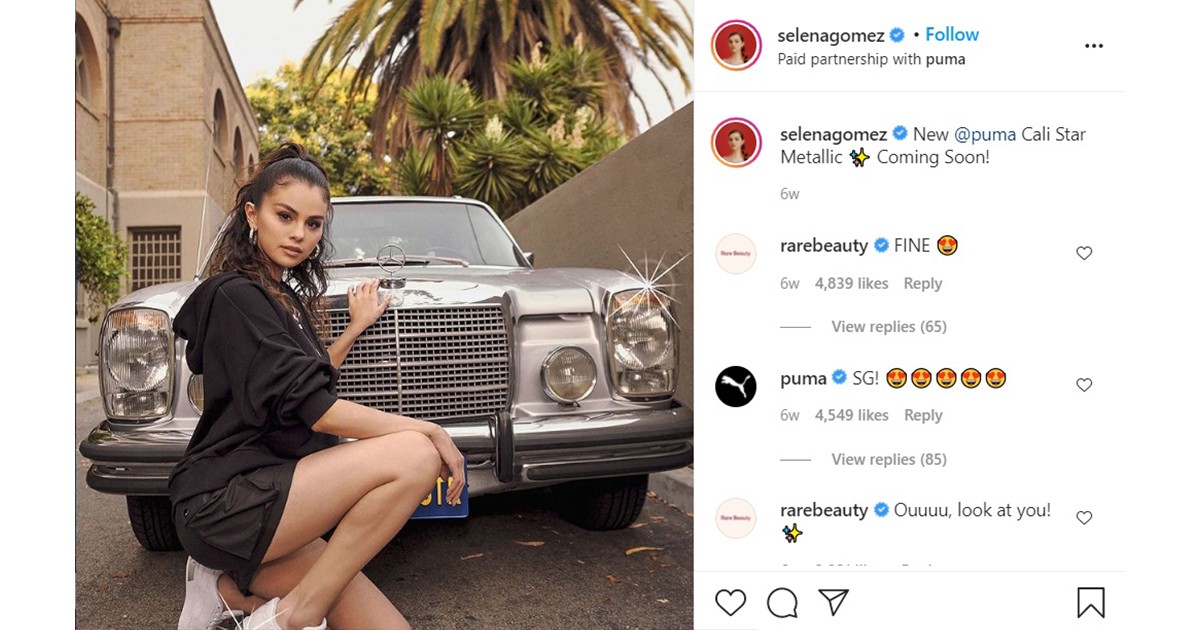
Source: Selena Gomez’s Instagram – Influencing and Marketing
Influencer marketing involves brands partnering with individuals who have significant influence and a substantial following on social media.
When an influencer promotes a brand, the positive attributes associated with them are transferred to the brand, enhancing its image and reputation.
This practice leverages the halo effect to maximize brand visibility, engagement, and conversion rates.
Virtual Influencer Marketing
Yes, this is a thing.
Virtual influencers are digital or AI-generated characters designed to have realistic human characteristics.
They can be used in marketing and advertising campaigns, just like their human counterparts – they generate content, interact with followers, and promote products or services.

Some of the most “well-known” virtual influencers include Lil Miquela, Shudu, and even a version of KFC’s famous mascot, dubbed “Virtual Influencer Colonel.”
Can Virtual Influencers create lasting brand halo effects too? Only time will tell.
Physical Appearance
There’s a reason why female and male models are frequently used in ads:
The physical attractiveness of a model in an ad positively influences attitude towards the product.
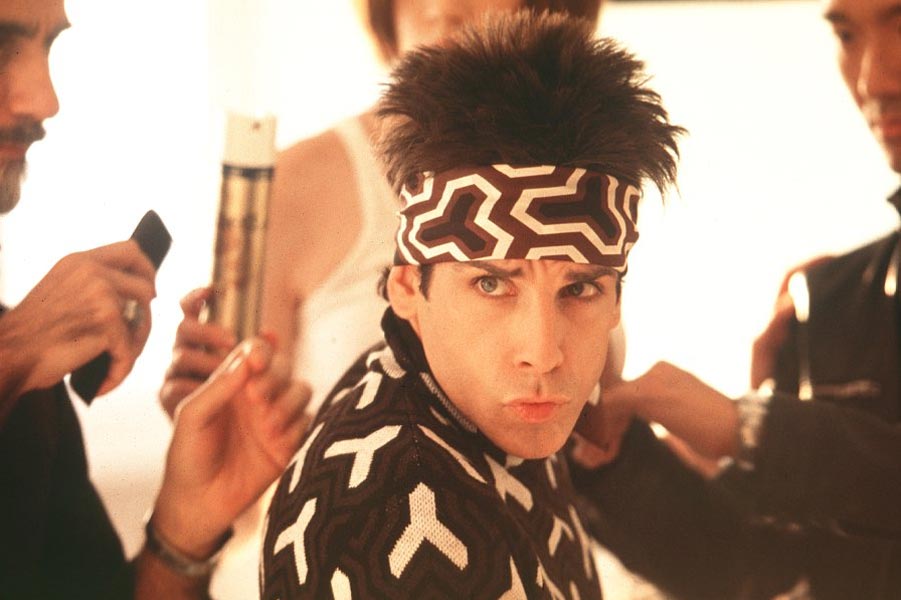
Source: NME (Sorry, it was physically impossible to resist inserting a Zoolander reference here)
There are countless examples of the halo effect doing its thing based on people’s physical appearance:
- Customers view employees who wear uniforms as being more professional, organized and reliable
- Attractive political candidates are seen as more knowledgeable, regardless of their level of knowledge
- Jurors are more likely to find attractive defendants not guilty. They also recommend less severe punishments for attractive individuals.
Health
In a series of studies, people eating at McDonald’s and Subway were asked to estimate the number of calories in their meals.
What happened?
People estimated that a 1,000 calorie Subway meal contained 21% fewer calories than the 1,000 calorie McDonald’s meal.
As a nice bonus, because the Subway participants thought they were eating healthier, they added on more sides such as cookies or fountain drinks.
Business
In the late 1990s, when Cisco was growing rapidly, there was no shortage of praise. Journalists recognized them for their brilliant strategy, shrewd acquisitions, and customer focus.
If the numbers are good, by extension, the company must be a well-oiled machine in all areas.
But then…
The tech bubble burst, and journalists pointed out Cisco’s “flawed strategy, haphazard acquisitions, and poor customer relations.”
In reality, not much had changed with the company or its strategy – just its perception based on the results and macro environment.
Brand Extension
A brand extension is when a company uses one of its established brand names to launch a new product.
Loyal customers of the old product will assume that the new product carries the same level of quality, thanks to the company’s brand halo.
The iconic example?

When Apple launched the iPod in 2001, Macs were a niche player in the PC market.
But the iPod’s runaway success also led to record Mac sales and market share gains against its PC rivals.
Apple would rinse and repeat, using the halo effect to later launch the iPhone, iPad, and Apple Watch. Apple’s halo simply can’t be beat by any other brand.
This can have a compounding effect over time, as a high-impact ad campaign can pay benefits over the long term.
Still, brand extensions happen all the time. Take Adidas launching a deodorant line:
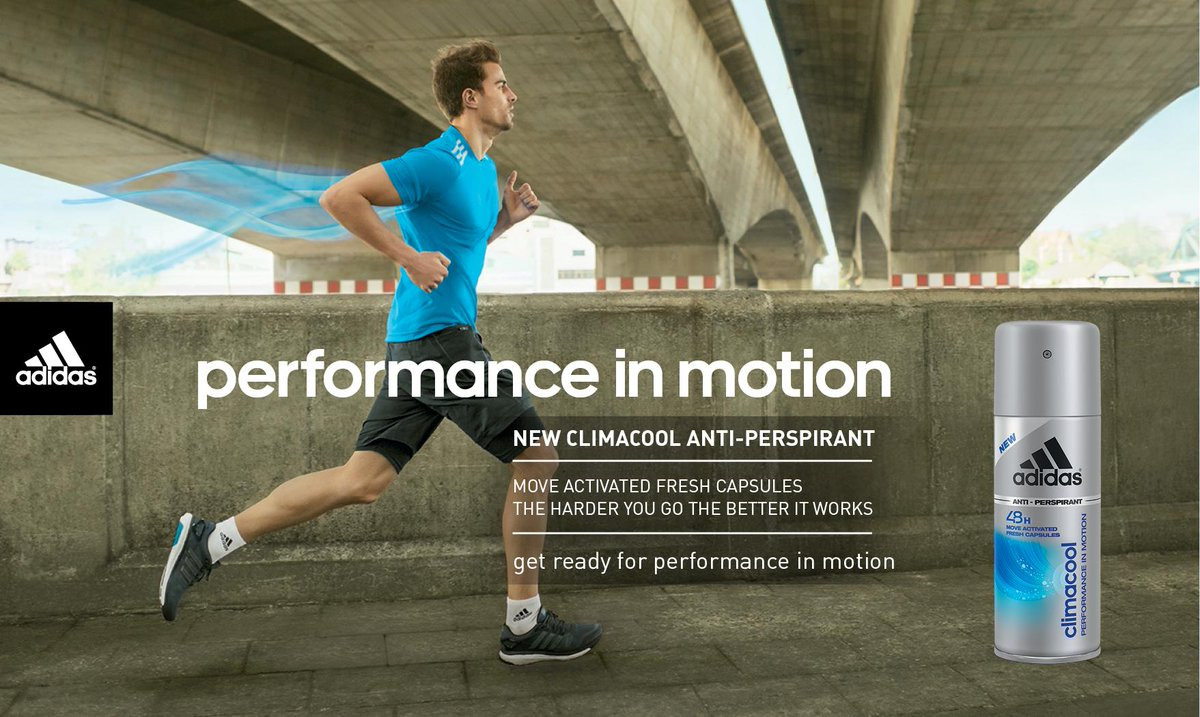
Source: @LondonMarathon on Twitter
Web Design
In an experiment run by the Decision Lab, users were shown two versions of a login page for an app.
The users were then asked whether they liked the login aesthetics, and to rate how intuitive, reliable and secure the app would be.
If a user liked the look and feel of the app’s login page, they tended to rate the app higher across all 3 categories:
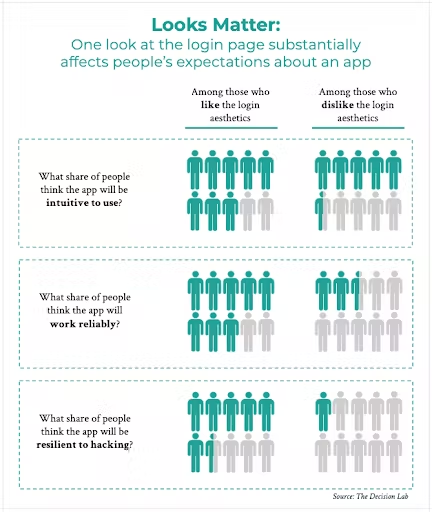
Source: The Decision Lab
The results showed how one small impression can have a big impact.
Users saw only a login page, yet they extrapolated expectations about the entire product.
The Decision Lab outlines two takeaways from this experiment:
- A single attribute of a product, such as its aesthetics, can greatly influence a user’s overall perceptions of that product, and
- People will form impressions based on very little information.
The Halo Effect in Advertising
To illustrate the halo effect at work in advertising, let’s first look at a company famously known for spending $0 on advertising: Tesla.
The biggest advertising event every year is the Super Bowl, with brands spending over $500M in advertising during the one day sporting event.
A single 30-second TV commercial spot cost $6.5M in 2022.
For the 2022 Super Bowl, legacy automakers Ford, GM and Nissan spent millions on TV spots promoting their electric vehicles.
Tesla, as per usual, did not run any spots. But take a look at what happened to Tesla sales: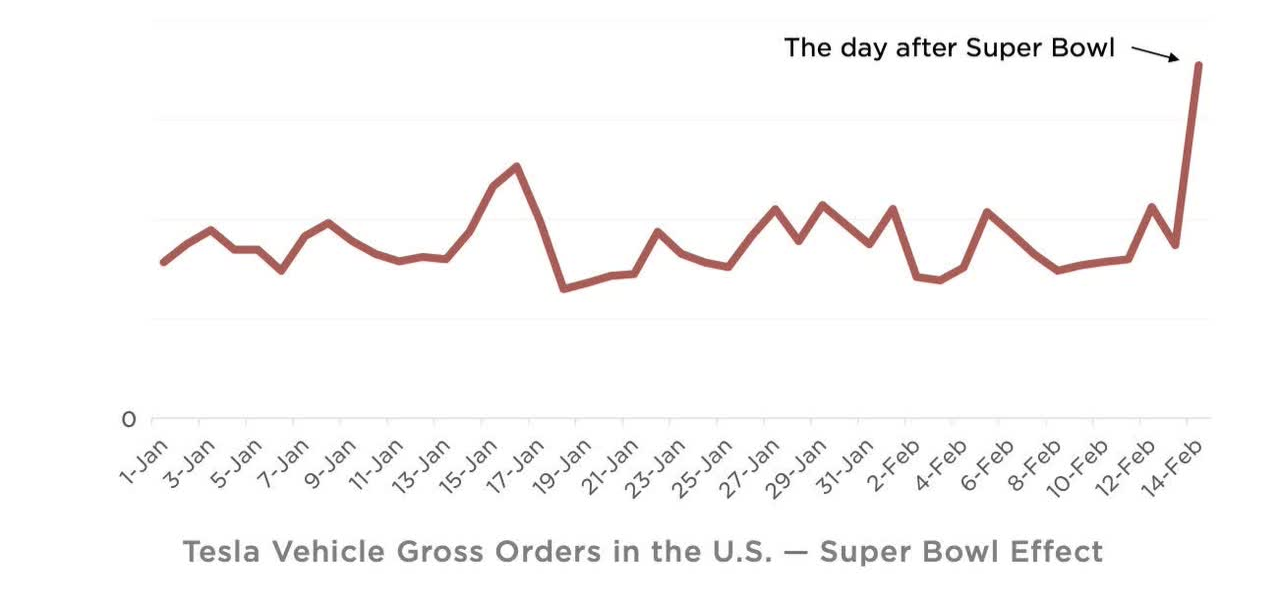
Source: Seeking Alpha
How, what, huh? Yep – halo effect. Tesla, being the largest electric vehicle manufacturer, benefitted from its competitors’ slick ad spots.
Ford, GM and Nissan raised the overall awareness of electric vehicles and promoted their desirable qualities.
But this had the unintended consequence of helping their competitor further entrench its market lead.
Ad Creative Design
Savvy brands will use the halo effect in ways such as intentionally placing their product next to other things that generate positive feelings.

Source: Snuggle
For example, detergent brands associate themselves with babies, sunshine, and flowers, even though detergent does not have any direct ties to those things.
Repeatedly displaying the brand alongside feel-good images makes people think more positively about the product.
The Ad Experience
It’s not just about what’s inside of the ad, but also what’s around it.

Or, for a more modern adaptation:

Ad Creative and Ad Experience go hand-in-hand.
But…
“I don’t pay attention to ads.”
“If an ad is on the page, I don’t even notice it, let alone click on it!”
These are common phrases, but the unspoken reality is that users often do see ads, whether they realize it or not, and the ads can certainly impact that user’s perception of the advertiser’s brand or product.
What can lead to whether that perception is a good one or not?

The ad’s content will play a big part – its colors, images, animation, and message to the consumer.
Less discussed though? The impact on perception from everything else the consumer is experiencing at that time:
- Is the ad competing with several other ads for the user’s attention?
- Is the website’s design clean and clear, or noisy and disruptive?
- Is the website super fast, or is it holding the user up?
In one ad experience test, we pitted CNN.com against FoxNews.com:
Amazingly, both sites took more than 3 minutes for all of the content to load!
Beyond this being rough for the user, it can’t be great for advertisers either, right?
Halo Strategy
Many brands do a great job leveraging the halo effect, whether it’s through celebrity endorsements, launching brand extensions, or adding some fluffy teddy bears into their ad creative.
But not enough consideration is given to the environment around the ads and the user’s experience while viewing that ad.
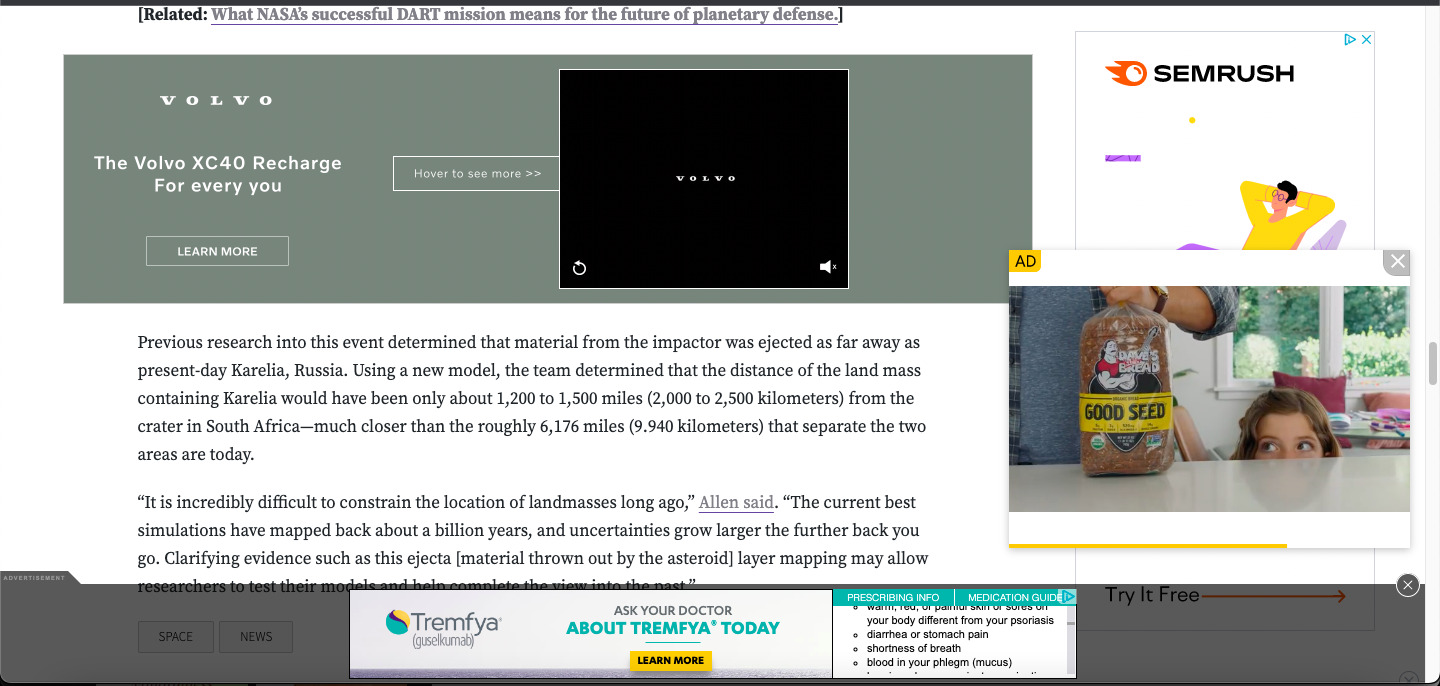
Adception: An ad, playing on top of an ad, playing on top of another ad
One study by Integral Ad Science (IAS) and Neuro-Insight, a neuroscience-based market research firm, measured the impact in one area of the user’s experience – brand safety.
The study found that ads running on brand-safe sites were perceived 74% more favorably compared to the same ads seen on brand-unsafe websites.
In another study by PWC, 73% of customers say brand experience matters when it comes to making a purchase:
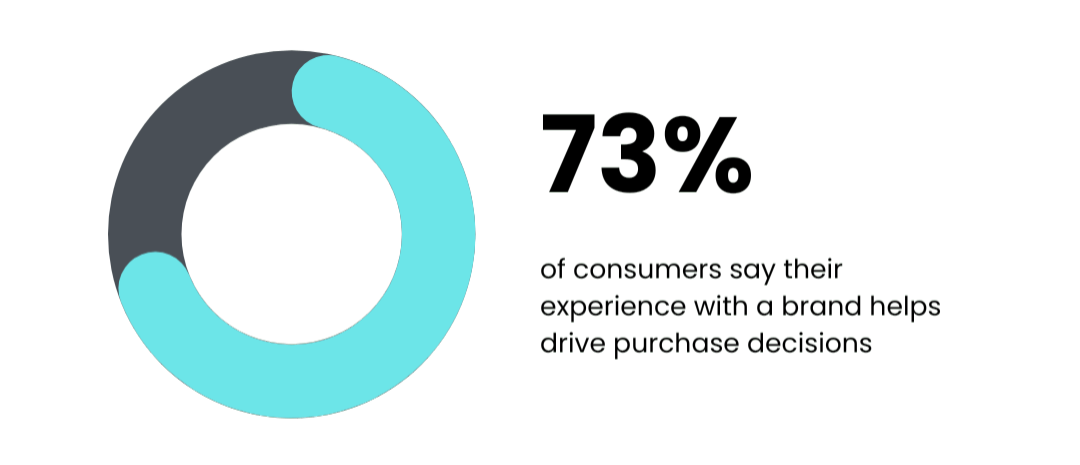 So, to pull those together:
So, to pull those together:
- Ads in poor website environments = poor perceptions of the website
- Poor website perceptions = poor perceptions of its advertisers
- Poor advertiser perceptions = lowered consumer willingness to purchase
What’s a brand to do?
We think there is an opportunity for brands to look at their media plans from the user experience angle.
Which websites have excellent user experiences that will create positive halo effects for the brand just by running there?
There are many factors to look at, but we will highlight 3:
1. Website speed – how healthy are the websites you’re running on? Are they blazing fast, with text and images loading quickly? If not, user frustration can lead to negative halo effects.

2. Average number of ad placements per page – it’s easy for your ad to get lost in the noise. Beyond slowing down a site for a user, too many ads can confuse the message to the consumer.
3. Average number of trackers per page – too many trackers and ad calls put user privacy and consumer trust at risk.
Better web experiences make for happier users and positive halo effects.
Conclusion
From Taylor Swift to male models to Subway, our brains use the halo effect as a shortcut to understanding the world around us.
In advertising, the halo effect will come from a combination of the content within the ad and the user’s experience while viewing the ad.
Great ads served into great ad environments will generate the greatest halo effect possible.
Get consumers to love your brand, and they will love your products by association.
Appendix – Related Cognitive Biases
As mentioned briefly above, there are over 180 cognitive biases, of which the halo effect is just one. Here are a few others that are adjacent to the halo effect:
Anchoring bias occurs when people rely too heavily on the first piece of information (the “anchor”) they receive when making decisions. Unlike the halo effect, which is based on an overall positive or negative impression, anchoring bias centers on the initial information rather than an overarching perception.
What is the Halo Effect? [With 12+ Examples]
The framing effect happens when people’s decisions are influenced by how information is presented, such as whether it’s framed positively or negatively. While the halo effect is based on a general impression of something, the framing effect depends on the specific wording or context of the information.
What is the Halo Effect? [With 12+ Examples]
The bandwagon effect refers to the tendency for people to adopt beliefs or behaviors because others are doing the same. Unlike the halo effect, which is driven by individual perceptions, the bandwagon effect is driven by social influence and the desire to conform to group trends.
What is the Halo Effect? [With 12+ Examples]
Perception bias occurs when individuals interpret information or situations based on their own subjective views, often ignoring objective reality. Unlike the halo effect, which is based on a single positive or negative trait, perception bias stems from broader personal assumptions and worldview.
What is the Halo Effect? [With 12+ Examples]
Recency Bias occurs when people give more importance to recent information when making decisions. Unlike the halo effect, which shapes an overall impression based on a single trait, recency bias focuses on the latest information, regardless of the overall impression.
What is the Halo Effect? [With 12+ Examples]
Authority bias is the tendency for individuals to trust and be influenced by information from authoritative or credible sources. In advertising, when brands are positioned alongside trustworthy content—such as expert articles or reputable news outlets—they gain an enhanced perception of credibility. This association fosters consumer trust, making individuals more confident in their purchasing decisions and positively impacting brand image.

